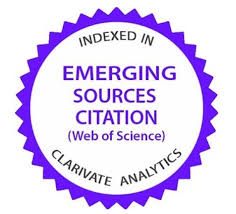El efecto del género en la toma de decisiones en el sistema de Justicia Juvenil
DOI:
https://doi.org/10.35295/osls.iisl/0000-0000-0000-1057Palabras clave:
género, tribunal, sistema de justicia juvenil, toma de decisionesResumen
Existe evidencia de que cuestiones de género influyen en la toma de decisiones en Justicia Juvenil en diversos países. Sin embargo, en España no existen estudios empíricos al respecto. Una aproximación a nuestra realidad puede servir de punto de partida para realizar un análisis más profundo sobre la cuestión. Se diseñó un estudio descriptivo de naturaleza retrospectiva. La muestra estuvo constituida por 166 jóvenes, 127 chicos y 39 chicas, expedientados en el Juzgado de Menores de Guadalajara por cometer algún delito. Los resultados muestran que no existen diferencias significativas entre chicos y chicas en cuanto a las decisiones que se toman con respecto a ellos en ninguna de las fases del procedimiento judicial. Tampoco si se analizan únicamente los delitos violentos, tradicionalmente considerados propios de los chicos. Todas las profesionales que han intervenido en la toma de decisiones analizada son mujeres. Esta circunstancia puede influir en los resultados.
Descargas
Metrics
Estadísticas globales ℹ️
|
473
Visualizaciones
|
626
Descargas
|
|
1099
Total
|
|
Citas
Almeda Samaranch, E., y Bodelón González, E., eds., 2007. Mujeres y castigo: un enfoque socio-jurídico y de género. Madrid: Dykinson.
Barberet, R., 2014. Women, Crime and Criminal Justice: A Global Enquiry. Londres: Routledge. DOI: https://doi.org/10.4324/9780203726440
Bodelón González, E., y Aedo Rivera, M., 2015. Las niñas en el sistema de Justicia Penal. Anales de la Cátedra Francisco Suárez [en línea], 49, 219-236. Disponible en: http://revistaseug.ugr.es/index.php/acfs/article/view/3283 [Con acceso el 4 de julio de 2019]. DOI: https://doi.org/10.30827/acfs.v49i0.3283
Bradley, M.S., y Engen, R.L., 2016. Leaving Prison: A Multilevel Investigation of Racial, Ethnic, and Gender Disproportionality in Correctional Release. Crime & Delinquency [en línea], 62(2), 253-279. Disponible en: https://doi.org/10.1177/0011128714557023 [Con acceso el 4 de julio de 2019]. DOI: https://doi.org/10.1177/0011128714557023
Brown, J.M., y Sorensen, J.R., 2014. Legal and Extra-Legal Factors Related to the Imposition of Blended Sentences. Criminal Justice Policy Review [en línea], 25(2), 227-241. Disponible en: https://doi.org/10.1177/0887403412465431 [Con acceso el 4 de julio de 2019]. DOI: https://doi.org/10.1177/0887403412465431
Cámara Arroyo, S., 2011. El internamiento de las menores infractoras en España. Anuario de la Facultad de Derecho de la Universidad de Alcalá [en línea], 4, 335-375. https://core.ac.uk/download/pdf/58908894.pdf [Con acceso el 4 de julio de 2019].
Carlen, P., 2012. Women’s imprisonment: an introduction to the Bangkok rules. Revista Crítica Penal y Poder [en línea], nº 3, 148-157. Disponible en: http://www.ucipfg.com/Repositorio/EPDP/Curso%20002/bloque_academico/Unidad05/Pat_Carlen_Ruleso%20Bangkok.pdf [Con acceso el 4 de julio de 2019].
Carr, N.T., et al., 2008. Gender Effects Along the Juvenile Justice System: Evidence of a Gendered Organization. Feminist Criminology [en línea], 3(1), 25-43. Disponible en: https://doi.org/10.1177/1557085107311390 [Con acceso el 4 de julio de 2019]. DOI: https://doi.org/10.1177/1557085107311390
Chesney-Lind, M., y Pasko, L., eds., 2013. The Female Offender: Girls, Women, and Crime. 3ª ed. Thousand Oaks: Sage. DOI: https://doi.org/10.4135/9781483387567
Cid, J., et al., 2002. Jueces penales y penas en España. Valencia: Tirant lo Blanch.
Daly, K., 1987. Discrimination in the Criminal Courts: Family, Gender, and the Problem of Equal Treatment. Social Forces [en línea], 66(1), 152. Disponible en: https://doi.org/10.1093/sf/66.1.152 [Con acceso el 4 de julio de 2019]. DOI: https://doi.org/10.2307/2578905
Deering, R., y Mellor, D., 2009. Sentencing of Male and Female Child Sex Offenders: Australian Study. Psychiatry, Psychology & Law [en línea], 16(3), 394-412. Disponible en: https://doi.org/10.1080/13218710902930291 [Con acceso el 4 de julio de 2019]. DOI: https://doi.org/10.1080/13218710902930291
Embry, R., y Lyons, P.M., 2012. Sex-based sentencing: Sentencing discrepancies between male and female sex offenders. Feminist Criminology [en línea], 7(2), 146-162. Disponible en: https://doi.org/10.1177/1557085111430214 [Con acceso el 4 de julio de 2019]. DOI: https://doi.org/10.1177/1557085111430214
Equipo Barañí, 2001. Mujeres gitanas y sistema penal. Madrid: METYEL.
Fernández-Molina, E., Bernuz, M.J., y Bartolomé-Gutiérrez, R., 2017. Spain. En: S. Decker y N. Marteache, eds., International Handbook of Juvenile Justice. Cham: Springer, 421-444. DOI: https://doi.org/10.1007/978-3-319-45090-2_20
Franklin, C.A., y Fearn, N.E., 2008. Gender, race, and formal court decision-making outcomes: Chivalry/paternalism, conflict theory or gender conflict? Journal of Criminal Justice [en línea], 36(3), 279-290. Disponible en: https://doi.org/10.1016/j.jcrimjus.2008.04.009 [Con acceso el 4 de julio de 2019]. DOI: https://doi.org/10.1016/j.jcrimjus.2008.04.009
Freiburger, T., 2011. The Impact of Gender, Offense Type, and Familial Role on the Decision to Incarcerate. Social Justice Research [en línea], 24(2), 143-167. Disponible en: https://doi.org/10.1177/0011128708330178 [Con acceso el 4 de julio de 2019]. DOI: https://doi.org/10.1007/s11211-011-0133-8
Freiburger, T.L. y Hilinski-Rosick, C.M., 2013. An Examination of the Interactions of Race and Gender on Sentencing Decisions Using a Trichotomous Dependent Variable. Crime & Delinquency [en línea], 59, 59-86. Disponible en: https://scholarworks.gvsu.edu/scjpeerpubs/12 [Con acceso el 4 de julio de 2019]. DOI: https://doi.org/10.1177/0011128708330178
Goethals, J., Maes, E., y Klinckhamers, P., 1997. Sex/gender-based decision-making in the criminal justice system as a possible (additional) explanation for the underrepresentation of women in official criminal statistics – A review of international literature. International Journal of Comparative and Applied Criminal Justice [en línea], 21(1-2), 207-240. Disponible en: https://doi.org/10.1080/01924036.1997.9678596 [Con acceso el 4 de julio de 2019]. DOI: https://doi.org/10.1080/01924036.1997.9678596
Hassett-Walker, C., Lateano, T., y Di Benedetto, M., 2014. Do female sex offenders receive preferential treatment in criminal charging and sentencing? Justice System Journal [en línea], 35(1), 62-86. Disponible en: https://www.tandfonline.com/doi/abs/10.1080/0098261X.2013.868278 [Con acceso el 4 de julio de 2019]. DOI: https://doi.org/10.1080/0098261X.2013.868278
Howell, R.J., y Hutto, T.S., 2012. Sentencing Convicted Juvenile Felony Offenders in the Adult Court: The Direct Effects of Race. Behavioral Sciences & The Law [en línea], 30(6), 782-799. Disponible en: https://doi.org/10.1002/bsl.2012 [Con acceso el 4 de julio de 2019]. DOI: https://doi.org/10.1002/bsl.2012
Koons-Witt, B., 2002. The effect of gender on the decision to incarcerate before and after the introduction of sentencing guidelines. Criminology [en línea], 40(2), 297-327. Disponible en: https://doi.org/10.1111/j.1745-9125.2002.tb00958.x [Con acceso el 4 de julio de 2019]. DOI: https://doi.org/10.1111/j.1745-9125.2002.tb00958.x
Kratcoski, P.C., y Edelbacher, M.M., 2009. Juvenile justice in Austria and the United States: similarities and differences. International Journal of Police Science & Management [en línea], 11(2), 203-216. Disponible en: https://doi.org/10.1350%2Fijps.2009.11.2.124 [Con acceso el 4 de julio de 2019]. DOI: https://doi.org/10.1350/ijps.2009.11.2.124
Leiber, M.J., y Peck, J.H., 2015. Race, Gender, Crime Severity, and Decision Making in the Juvenile Justice System. Crime & Delinquency [en línea], 61(6), 771-797. Disponible en: https://psycnet.apa.org/doi/10.1177/0011128712446898 [Con acceso el 4 de julio de 2019]. DOI: https://doi.org/10.1177/0011128712446898
McCarter, S., 2009. Legal and Extralegal Factors Affecting Minority Overrepresentation in Virginia’s Juvenile Justice System: A Mixed-Method Study. Child & Adolescent Social Work Journal [en línea], 26(6), 533-544. Disponible en: https://doi.org/10.1007/s10560-009-0185-x [Con acceso el 4 de julio de 2019]. DOI: https://doi.org/10.1007/s10560-009-0185-x
Moore, L.D., y Padavic, I., 2010. Racial and ethnic disparities in girls’ sentencing in the juvenile justice system. Feminist Criminology [en línea], 5(3), 263-285. Disponible en: http://dx.doi.org/10.1177/1557085110380583 [Con acceso el 4 de julio de 2019]. DOI: https://doi.org/10.1177/1557085110380583
Naredo, M., 2004. ¿Qué nos enseñan las reclusas? La criminalización de la pobreza desde la situación de reclusas extranjeras y gitanas. Humanismo y trabajo social [en línea], 67-94. Disponible en: https://buleria.unileon.es/bitstream/handle/10612/1447/NaredoMolero.pdf?sequence=1 [Con acceso el 4 de julio de 2019].
Pollak, O., 1950. The Criminality of Women. Filadelfia: University of Pennsylvania Press.
Rodríguez, S.F., Curry, T.R., y Lee, G., 2006. Gender Differences in Criminal Sentencing: Do Effects Vary Across Violent, Property, and Drug Offenses? Social Science Quarterly [en línea], 87(2), 318-339. Disponible en: https://doi.org/10.1111/j.1540-6237.2006.00383.x [Con acceso el 4 de julio de 2019]. DOI: https://doi.org/10.1111/j.1540-6237.2006.00383.x
Sandler, J., y Freeman, N.J., 2011. Female sex offenders and the criminal justice system: A comparison of arrests and outcomes. Journal of Sexual Aggression [en línea], 17(1), 61-76. Disponible en: https://doi.org/10.1080/13552600.2010.537380 [Con acceso el 4 de julio de 2019]. DOI: https://doi.org/10.1080/13552600.2010.537380
Schwalbe, C., y Maschi, T., 2009. Investigating Probation Strategies with Juvenile Offenders: The Influence of Officers’ Attitudes and Youth Characteristics. Law & Human Behavior [en línea], 33(5), 357-367. Disponible en: https://psycnet.apa.org/doi/10.1007/s10979-008-9158-4 [Con acceso el 4 de julio de 2019]. DOI: https://doi.org/10.1007/s10979-008-9158-4
Scott, J.W., 2011. Género: ¿Todavía una categoría útil para el análisis? La manzana de la Discordia [en línea], 6(1), 95-101. Disponible en: https://doi.org/10.25100/lamanzanadeladiscordia.v6i1.1514 [Con acceso el 4 de julio de 2019]. DOI: https://doi.org/10.25100/lamanzanadeladiscordia.v6i1.1514
Simon, R., 1975. Women and Crime. Lexington Books.
Spivak, A.L., et al., 2014. Gender and status offending: Judicial paternalism in juvenile justice processing. Feminist Criminology [en línea], 9(3), 224-248. Disponible en: https://psycnet.apa.org/doi/10.1177/1557085114531318 [Con acceso el 4 de julio de 2019]. DOI: https://doi.org/10.1177/1557085114531318
Terblanche, S.S., 2012. The child justice act: a detailed consideration of section 68 as a point of departure with respect to the sentencing of young offenders. Potchefstroom Electronic Law Journal [en línea], 15(5), 435-475. Disponible en: https://doi.org/10.17159/1727-3781/2012/v15i5a2531 [Con acceso el 4 de julio de 2019]. DOI: https://doi.org/10.17159/1727-3781/2012/v15i5a2531
Van den Bergh, B.J., et al., 2011. Imprisonment and women's health: concerns about gender sensitivity, human rights and public health. Bulletin of The World Health Organization [en línea], 89(9), 689-694. Disponible en: https://doi.org/10.2471/BLT.10.082842 [Con acceso el 4 de julio de 2019]. DOI: https://doi.org/10.2471/BLT.10.082842
Visher, C.A., 1983, Gender, Police Arrest Decisions, and Notions of Chivalry. Criminology [en línea], 21, 5-28. Disponible en: https://doi.org/10.1111/j.1745-9125.1983.tb00248.x [Con acceso el 4 de julio de 2019]. DOI: https://doi.org/10.1111/j.1745-9125.1983.tb00248.x
Descargas
Publicado
Cómo citar
Número
Sección
Licencia
Derechos de autor 2020 Ricardo Gallego Córcoles, Raquel Bartolomé Gutiérrez

Esta obra está bajo una licencia internacional Creative Commons Atribución-NoComercial-SinDerivadas 4.0.
Los autores conservan el copyright de sus trabajos, que se publicarán en OSLS bajo una licencia Creative Commons Reconocimiento NoComercial SinObraDerivada. Puede consultar más detalles en: http://es.creativecommons.org/licencia/. Si no está de acuerdo con esta licencia, por favor, póngase en contacto con nosotros.
El autor concede los permisos necesarios para difundir la información bibliográfica del artículo, incluyendo el resumen, y autorizar a otros, incluyendo las bases de datos bibliográficas, de índices y servicios de alerta de contenidos, a copiar y comunicar esta información.
Para más información sobre los permisos para distribuir su artículo en cada fase de la producción, por favor, lea nuestra Política de Autoarchivo y Divulgación (en inglés).
Las condiciones de copyright con el nombre de autores y co-autores, y la licencia Creative Commons se mostrarán en el artículo. Estas condiciones se deben aceptar como parte del proceso de envío de un artículo a la revista. Por favor, asegúrese de que todos los co-autores se mencionan correctamente, y que entienden y aceptan estos términos.





















